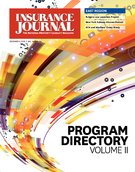Driving my children to school each morning it’s hard not to notice the number of parents attached to their cell phone. While state law prohibits cell phone use in school zones and city law prohibits cell phone use entirely unless on a hands-free device, that doesn’t stop drivers from near-miss collisions nearly every morning.
What’s to stop young drivers from avoiding distracted driving behavior if adults don’t stop themselves? Education, perhaps.
A program aimed at educating teens about distracted driving–including a tour of a hospital trauma center and testimony from a trauma survivor — hopes to increase awareness of the dangers of texting, cell phone use and other distractions while driving.
After going through the “Get the Message” program, teens say they will be less likely to text or make cell phone calls while driving, according to a study in the Journal of Trauma Nursing, the publication of the Society of Trauma Nurses.
The study by Ruth Adeola, RN, MS, and colleagues at R. Adams Cowley Shock Trauma Center at University of Maryland Medical Center, Baltimore, evaluated the effectiveness of the “Get the Message” program, designed to identify, define and measure the factors contributing to distracted driving in adolescents. About 900 teens were surveyed before and after completing the hospital-based injury prevention program.
“Although teens are the least likely of any age group to engage in healthy driving behaviors, this study demonstrates the ability to influence teen knowledge and behavior positively,” the authors write.
Before-and-after questionnaires indicated that the program increased awareness of the risks of distracted driving. For example, after the program, the teens were more likely to understand that texting while driving was as dangerous as driving while impaired. They were also more likely to understand the risks of other distractions, such as driving while talking on the phone.
The study said there are several factors that contribute to the unique risk of distracted driving teenage drivers, including limited driving experience, lower awareness of their driving abilities and weaknesses, and an “illusion of invincibility” that may cause them to underestimate the dangers of risky activities. But what about experienced, adult drivers who may also underestimate the risks? Perhaps adult drivers need to also “Get the Message.”
Topics Personal Auto
Was this article valuable?
Here are more articles you may enjoy.


 What Happened to Reinsurance ‘Class of 2023’? Hard Market Defies Age-Old Patterns.
What Happened to Reinsurance ‘Class of 2023’? Hard Market Defies Age-Old Patterns.  AT&T Says Data From Around 109M Customer Accounts Illegally Downloaded
AT&T Says Data From Around 109M Customer Accounts Illegally Downloaded  Elon Musk Beats $500 Million Severance Lawsuit by Fired Twitter Workers
Elon Musk Beats $500 Million Severance Lawsuit by Fired Twitter Workers  The Battle Over J&J’s Bankruptcy Plan to End Talc Lawsuits
The Battle Over J&J’s Bankruptcy Plan to End Talc Lawsuits 



